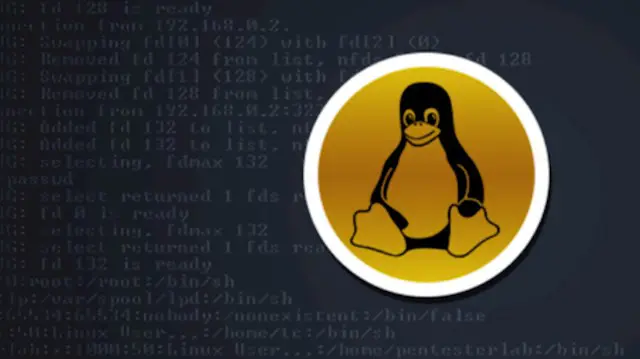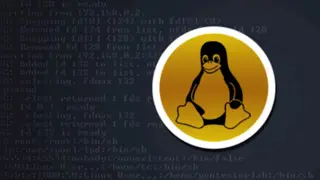
Unix and Shell Scripting
Self-paced videos, Lifetime access, Study material, Certification prep, Technical support, Course Completion Certificate
Uplatz
Summary
- Reed courses certificate of completion - Free
- Uplatz Certificate of Completion - Free
Add to basket or enquire
Overview
Uplatz offers comprehensive training on Unix and Shell Scripting. This is video-based online course (self-paced training). You will be awarded Course Completion Certificate at the end of the course.
UNIX is an operating system developed in the Bell Laboratories of AT&T and is an example a multi-tasking, multi-user operating system. It provides its users with: program development tools; electronic communications facilities, such as an electronic mail; text editors and text formatters. There are also many development tools available as standard within the UNIX operating system that other operating systems require as add-ons.
Initial proprietary derivatives included the HP-UX and the SunOS systems. However, growing incompatibility between these systems led to the creation of interoperability standards like POSIX. Modern POSIX systems include Linux, its variants, and Mac OS.
Unix is the most powerful and popular multi-user and multi-tasking Operating System. The basic concepts of Unix were originated in the Multics project of 1969. The Multics system was intended as a time-sharing system that would allow multiple users to simultaneously access a mainframe computer.
Ken Thompson, Dennis Ritchie, and others developed the basic building blocks of Unix including a hierarchical file system, i.e, the concepts of processes and a command line interpreter for the PDP-7. From there, multiple generations of Unix were developed for various machines.
Growing incompatibility between these systems led to the creation of interoperability standards like POSIX and Single Unix Specification.
UNIX provides a series of shells. The UNIX operating system is made up of three parts; the kernel, the shell and the programs.
The user is on the outermost shell, the second layer is called the shell that interprets your commands and passes the instructions to the operating system proper, while the third layer is the kernel which handles the interaction between the shell and the hardware; and the fourth layer is the hardware itself.
The standard shell is the Bourne Shell which was designed for general purpose use. It is relatively small, and efficient, but lacks certain facilities, such as a command history and aliasing. Two popular enhanced shells are the C Shell and the Bourne Shell. The C shell is less efficient compared to the Bourne and Korn shells; the Korn shell is larger than the Bourne shell but it is more efficient because of its built-in functions.
The shell interacts with the UNIX's Kernel which is heart of the operatiing system. The kernel is the bridge between the application packages and the hardware it is running on.
Course Objective
This Unix Operating System training by Uplatz introduces the students to the main concepts of the UNIX Operating System. The most commonly used Unix commands and utilities are described in detail as are the command line wildcard and redirection facilities. The mechanisms by which a user acquires a login environment are discussed and the main features of the Korn/Posix/Bash Shells are introduced.
The Shell Programming part of the course is designed to give students practical experience in developing and writing UNIX shell scripts. Most of the built-in shell commands are introduced along with the main program control structures.
Curriculum
Course media
Description
Unix and Shell Scripting - Course Curriculum
Unix
- Creating, copying, renaming, moving and deleting files and directories
- Using the shell's redirection and pipe facilities
- Editing text files using the vi editor
- Setting and changing access permissions on files
- Monitoring and controlling their own processes
- Using the basic file and text searching utilities, including regular expressions (regex)
- Customizing their own login environment
Shell Programming
- Writing simple scripts to enhance basic command output
- Using the various shell quoting mechanisms appropriately
- Manipulating shell variables and user-defined variables in scripts
- Implementing conditional execution facilities
- Using the shell's built-in loop constructs where appropriate
- Writing scripts to trap user interrupts
- User defined Functions
- Developing menu-driven shell scripts
Who is this course for?
- Any individual who wants to kickstart a career in Unix, Linux, Shell Programming
- UNIX Administrators
- Anyone who wants to understand and use the UNIX Operating System
- Support Engineers - Unix, SQL
- UNIX and Linux Systems Engineers
- Application Support Analysts - Unix, SQL
- Application Developers and Programmers
- Shell Scripting Programmers
- ETL Developers
- Software Testers
- System Administrators
- Network Engineers
Requirements
Passion and determination to achieve your goals!
Career path
- UNIX Administrator
- Linux Administrator
- Support Engineer - Unix, SQL
- Application Support Analyst - Unix, SQL
- UNIX Systems Engineer
- Network System Administrator - UNIX, Linux
- Server & Storage Analyst Unix
- Application Developer
- Unix Developer
- Software Tester
- IT Support Analyst
- Shell Scripting Programmer
Questions and answers
Currently there are no Q&As for this course. Be the first to ask a question.
Certificates
Reed courses certificate of completion
Digital certificate - Included
Will be downloadable when all lectures have been completed
Uplatz Certificate of Completion
Digital certificate - Included
Course Completion Certificate by Uplatz
Reviews
Currently there are no reviews for this course. Be the first to leave a review.
Legal information
This course is advertised on reed.co.uk by the Course Provider, whose terms and conditions apply. Purchases are made directly from the Course Provider, and as such, content and materials are supplied by the Course Provider directly. Reed is acting as agent and not reseller in relation to this course. Reed's only responsibility is to facilitate your payment for the course. It is your responsibility to review and agree to the Course Provider's terms and conditions and satisfy yourself as to the suitability of the course you intend to purchase. Reed will not have any responsibility for the content of the course and/or associated materials.


